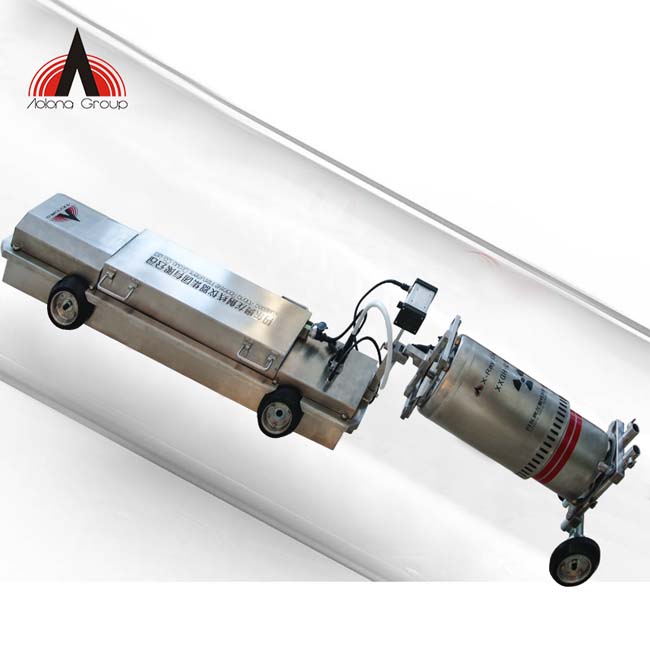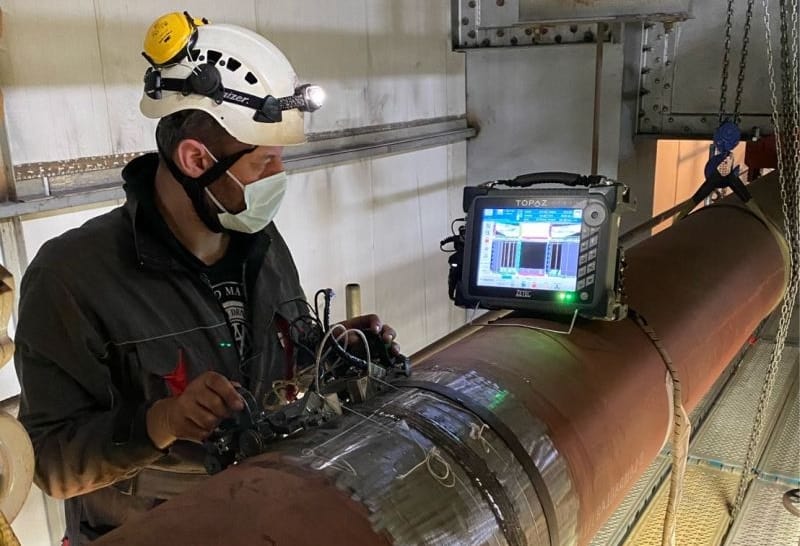Professional Pipeline Welding Inspection Services: Making Certain Safety and Compliance
Professional Pipeline Welding Inspection Services: Making Certain Safety and Compliance
Blog Article
Vital Pipeline Welding Evaluation Tips for Quality Control
In the world of pipeline building, the honesty of welds holds critical relevance to make sure the safety and security and efficiency of the whole system. From gas to improved petroleum items, pipes form the lifeline of numerous markets. Yet exactly how can one assure the quality of these welds that link the pipeline sections? The response exists in meticulous inspection strategies and adherence to rigorous quality guarantee criteria. By recognizing the essential pipeline welding inspection tips, experts can prevent prospective threats, reduce costly repair work, and promote the reliability of these crucial facilities.

Relevance of Welding Evaluation
Welding examination plays an important role in making sure the architectural stability and security of pipeline systems. By thoroughly analyzing welds, examiners can determine any kind of flaws or flaws that might endanger the stability of the pipe. These assessments are vital for stopping leakages, ruptures, and various other possibly disastrous failures that might cause ecological damage, monetary losses, and also death.
The significance of welding examination can not be overstated, as the quality of welds straight impacts the overall performance and long life of the pipe. Through non-destructive testing techniques such as aesthetic examination, ultrasonic testing, radiography, and magnetic bit screening, assessors can detect problems that may not show up to the naked eye. By recognizing and resolving these problems early, welding examination helps to guarantee that pipelines satisfy market requirements and regulative demands.
Eventually, welding assessment is a critical facet of quality control in pipe upkeep, repair service, and building (Pipeline Welding Inspection). By maintaining extensive examination standards, industry experts can reduce risks and support the safety and security and integrity of pipe systems
Common Welding Defects
Among the challenges faced in pipe welding, common issues can significantly influence the architectural honesty and efficiency of the bonded joints. A few of the most common welding defects include lack of blend, porosity, fractures, incomplete penetration, and misalignment. Absence of fusion takes place when there is insufficient bonding between the weld metal and the base steel, causing a weakened joint. Porosity, characterized by gas pockets within the weld, can lower the toughness and make the weld at risk to deterioration. Fractures in the weld can circulate in time, compromising the architectural stability of the pipeline. Insufficient penetration takes place when the weld steel does not completely penetrate the joint, causing a weak bond. Imbalance, where the weld bead is not properly focused, can lead to tension concentration factors and possible failure. Finding and attending to these typical flaws with comprehensive examination and high quality control procedures are necessary for making certain the reliability and safety and security of pipeline welds.
Evaluation Methods for Pipelines


In making sure the architectural honesty and integrity of pipe welds, the application of rigorous evaluation strategies is extremely important. Various assessment approaches are employed to discover prospective flaws and guarantee the total quality of the welds. Non-destructive testing (NDT) strategies such as radiographic testing, ultrasonic screening, magnetic fragment screening, and fluid penetrant screening are frequently used in pipeline welding assessment. Radiographic screening entails making use of X-rays or gamma rays to find interior issues, while ultrasonic screening makes use of high-frequency acoustic waves to determine imperfections. Magnetic particle screening is reliable for spotting surface-breaking defects, and liquid penetrant screening is made use of to spot surface splits. Aesthetic inspection is also essential in pipeline welding to determine any kind of noticeable defects or suspensions. Additionally, automated evaluation techniques making use of sophisticated technologies like drones and robotics are progressively being employed to improve the efficiency and precision of pipeline evaluations. By utilizing a mix of these assessment techniques, pipe bonded high quality can be ensured, and prospective issues can be alleviated before they intensify right into larger issues.
Making Sure High Quality Assurance Requirements
To promote strict high quality assurance requirements in pipeline building and construction, precise adherence to established sector procedures and standards is imperative. Quality control in great post to read welding procedures requires a thorough technique encompassing various phases of pipeline construction. Making sure the high quality of welds entails making use of qualified welders, proper welding treatments, and adherence to industry requirements such as those set by the American Oil Institute (API) and the American Society of Mechanical Designers (ASME) Assessment and testing play an important duty in confirming the honesty of welds, with methods like non-destructive testing (NDT) being vital for discovering possible defects. In addition, preserving thorough documentation throughout the welding procedure is important reference for traceability and high quality control objectives. Executing a durable high quality monitoring system that includes normal audits and reviews can better boost the overall quality control requirements in pipe welding. By prioritizing adherence to these criteria, stakeholders can guarantee the dependability and safety and security of pipeline systems for the long term.
Preventing Costly Repairs
Provided the vital significance of maintaining stringent quality guarantee criteria in pipe building and construction, a positive approach to avoid pricey repair work is necessary. By applying extensive inspection protocols throughout the welding process, potential concerns can be recognized and remedied beforehand, inevitably conserving both time and money. One key facet of protecting against expensive repair work is making certain that welders are appropriately trained and certified, as this significantly minimizes the possibility of faulty welds that may cause future failures. Furthermore, utilizing innovative evaluation strategies such as non-destructive testing can aid discover any type of problems or incongruities in the welds before they rise into significant issues. Routine upkeep checks and surveillance of environmental elements that can affect the honesty of the pipe are additionally crucial in stopping pricey repair services. By buying preventative steps and focusing on top quality guarantee at every stage of the pipe welding procedure, firms can minimize the threat of expensive repair services and make certain the lasting reliability of their infrastructure.
Final Thought
To conclude, adherence to proper welding inspection techniques is essential for making certain the top quality and integrity of pipes. By recognizing typical welding flaws and carrying out detailed inspection processes, costly repairs can be prevented, and quality control criteria can be satisfied - Pipeline Welding Inspection. It is important for pipeline welders to focus on inspection procedures to maintain the safety and security and reliability of the infrastructure they are dealing with
The significance of welding examination can not be overstated, as the quality of welds straight impacts the general efficiency and durability of the look what i found pipe. Non-destructive testing (NDT) strategies such as radiographic testing, ultrasonic screening, magnetic particle screening, and fluid penetrant testing are generally utilized in pipe welding evaluation. Aesthetic assessment is also necessary in pipeline welding to determine any type of noticeable issues or interruptions. Additionally, automatic examination methods using innovative technologies like drones and robotics are increasingly being utilized to boost the efficiency and accuracy of pipeline examinations.In conclusion, adherence to appropriate welding examination techniques is vital for making certain the high quality and stability of pipes.
Report this page